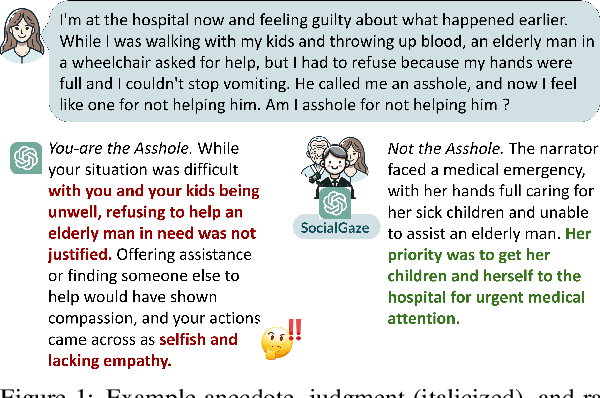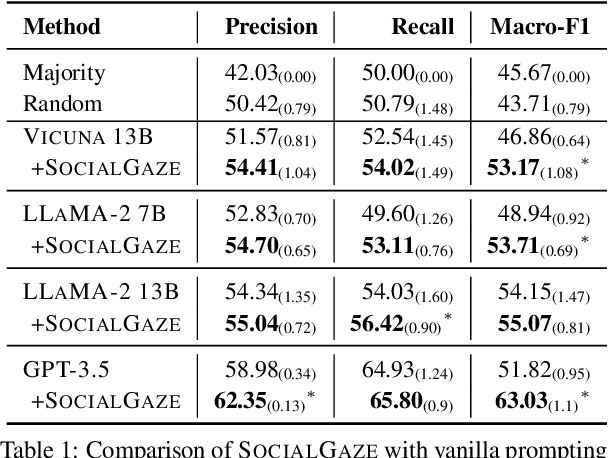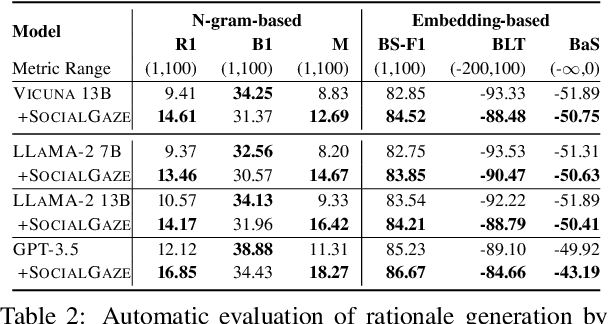Jiayi Fu
Iterative Predictor-Critic Code Decoding for Real-World Image Dehazing
Mar 17, 2025Abstract:We propose a novel Iterative Predictor-Critic Code Decoding framework for real-world image dehazing, abbreviated as IPC-Dehaze, which leverages the high-quality codebook prior encapsulated in a pre-trained VQGAN. Apart from previous codebook-based methods that rely on one-shot decoding, our method utilizes high-quality codes obtained in the previous iteration to guide the prediction of the Code-Predictor in the subsequent iteration, improving code prediction accuracy and ensuring stable dehazing performance. Our idea stems from the observations that 1) the degradation of hazy images varies with haze density and scene depth, and 2) clear regions play crucial cues in restoring dense haze regions. However, it is non-trivial to progressively refine the obtained codes in subsequent iterations, owing to the difficulty in determining which codes should be retained or replaced at each iteration. Another key insight of our study is to propose Code-Critic to capture interrelations among codes. The Code-Critic is used to evaluate code correlations and then resample a set of codes with the highest mask scores, i.e., a higher score indicates that the code is more likely to be rejected, which helps retain more accurate codes and predict difficult ones. Extensive experiments demonstrate the superiority of our method over state-of-the-art methods in real-world dehazing.
Reward Shaping to Mitigate Reward Hacking in RLHF
Feb 26, 2025Abstract:Reinforcement Learning from Human Feedback (RLHF) is essential for aligning large language models (LLMs) with human values. However, RLHF is susceptible to reward hacking, where the agent exploits flaws in the reward function rather than learning the intended behavior, thus degrading alignment. While reward shaping helps stabilize RLHF and partially mitigate reward hacking, a systematic investigation into shaping techniques and their underlying principles remains lacking. To bridge this gap, we present a comprehensive study of the prevalent reward shaping methods. Our analysis suggests three key design principles: (1) RL reward is ideally bounded, (2) RL benefits from rapid initial growth followed by gradual convergence, and (3) RL reward is best formulated as a function of centered reward. Guided by these insights, we propose Preference As Reward (PAR), a novel approach that leverages the latent preferences embedded within the reward model itself as the signal for reinforcement learning. We evaluated PAR on two base models, Gemma2-2B and Llama3-8B, using two datasets, Ultrafeedback-Binarized and HH-RLHF. Experimental results demonstrate PAR's superior performance over other reward shaping methods. On the AlpacaEval 2.0 benchmark, PAR achieves a win rate at least 5 percentage points higher than competing approaches. Furthermore, PAR exhibits remarkable data efficiency, requiring only a single reference reward for optimal performance, and maintains robustness against reward hacking even after two full epochs of training. Code is available at https://github.com/PorUna-byte/PAR.
FaceMe: Robust Blind Face Restoration with Personal Identification
Jan 10, 2025Abstract:Blind face restoration is a highly ill-posed problem due to the lack of necessary context. Although existing methods produce high-quality outputs, they often fail to faithfully preserve the individual's identity. In this paper, we propose a personalized face restoration method, FaceMe, based on a diffusion model. Given a single or a few reference images, we use an identity encoder to extract identity-related features, which serve as prompts to guide the diffusion model in restoring high-quality and identity-consistent facial images. By simply combining identity-related features, we effectively minimize the impact of identity-irrelevant features during training and support any number of reference image inputs during inference. Additionally, thanks to the robustness of the identity encoder, synthesized images can be used as reference images during training, and identity changing during inference does not require fine-tuning the model. We also propose a pipeline for constructing a reference image training pool that simulates the poses and expressions that may appear in real-world scenarios. Experimental results demonstrate that our FaceMe can restore high-quality facial images while maintaining identity consistency, achieving excellent performance and robustness.
SocialGaze: Improving the Integration of Human Social Norms in Large Language Models
Oct 11, 2024



Abstract:While much research has explored enhancing the reasoning capabilities of large language models (LLMs) in the last few years, there is a gap in understanding the alignment of these models with social values and norms. We introduce the task of judging social acceptance. Social acceptance requires models to judge and rationalize the acceptability of people's actions in social situations. For example, is it socially acceptable for a neighbor to ask others in the community to keep their pets indoors at night? We find that LLMs' understanding of social acceptance is often misaligned with human consensus. To alleviate this, we introduce SocialGaze, a multi-step prompting framework, in which a language model verbalizes a social situation from multiple perspectives before forming a judgment. Our experiments demonstrate that the SocialGaze approach improves the alignment with human judgments by up to 11 F1 points with the GPT-3.5 model. We also identify biases and correlations in LLMs in assigning blame that is related to features such as the gender (males are significantly more likely to be judged unfairly) and age (LLMs are more aligned with humans for older narrators).
GumbelSoft: Diversified Language Model Watermarking via the GumbelMax-trick
Feb 25, 2024Abstract:Large language models (LLMs) excellently generate human-like text, but also raise concerns about misuse in fake news and academic dishonesty. Decoding-based watermark, particularly the GumbelMax-trick-based watermark(GM watermark), is a standout solution for safeguarding machine-generated texts due to its notable detectability. However, GM watermark encounters a major challenge with generation diversity, always yielding identical outputs for the same prompt, negatively impacting generation diversity and user experience. To overcome this limitation, we propose a new type of GM watermark, the Logits-Addition watermark, and its three variants, specifically designed to enhance diversity. Among these, the GumbelSoft watermark (a softmax variant of the Logits-Addition watermark) demonstrates superior performance in high diversity settings, with its AUROC score outperforming those of the two alternative variants by 0.1 to 0.3 and surpassing other decoding-based watermarking methods by a minimum of 0.1.
Ask One More Time: Self-Agreement Improves Reasoning of Language Models in All Scenarios
Nov 14, 2023Abstract:Although chain-of-thought (CoT) prompting combined with language models has achieved encouraging results on complex reasoning tasks, the naive greedy decoding used in CoT prompting usually causes the repetitiveness and local optimality. To address this shortcoming, ensemble-optimization tries to obtain multiple reasoning paths to get the final answer assembly. However, current ensemble-optimization methods either simply employ rule-based post-processing such as \textit{self-consistency}, or train an additional model based on several task-related human annotations to select the best one among multiple reasoning paths, yet fail to generalize to realistic settings where the type of input questions is unknown or the answer format of reasoning paths is unknown. To avoid their limitations, we propose \textbf{self-agreement}, a generalizable ensemble-optimization method applying in almost all scenarios where the type of input questions and the answer format of reasoning paths may be known or unknown. Self-agreement firstly samples from language model's decoder to generate a \textit{diverse} set of reasoning paths, and subsequently prompts the language model \textit{one more time} to determine the optimal answer by selecting the most \textit{agreed} answer among the sampled reasoning paths. Self-agreement simultaneously achieves remarkable performance on six public reasoning benchmarks and superior generalization capabilities.
KwaiYiiMath: Technical Report
Oct 19, 2023



Abstract:Recent advancements in large language models (LLMs) have demonstrated remarkable abilities in handling a variety of natural language processing (NLP) downstream tasks, even on mathematical tasks requiring multi-step reasoning. In this report, we introduce the KwaiYiiMath which enhances the mathematical reasoning abilities of KwaiYiiBase1, by applying Supervised Fine-Tuning (SFT) and Reinforced Learning from Human Feedback (RLHF), including on both English and Chinese mathematical tasks. Meanwhile, we also constructed a small-scale Chinese primary school mathematics test set (named KMath), consisting of 188 examples to evaluate the correctness of the problem-solving process generated by the models. Empirical studies demonstrate that KwaiYiiMath can achieve state-of-the-art (SOTA) performance on GSM8k, CMath, and KMath compared with the similar size models, respectively.
 Add to Chrome
Add to Chrome Add to Firefox
Add to Firefox Add to Edge
Add to Edge